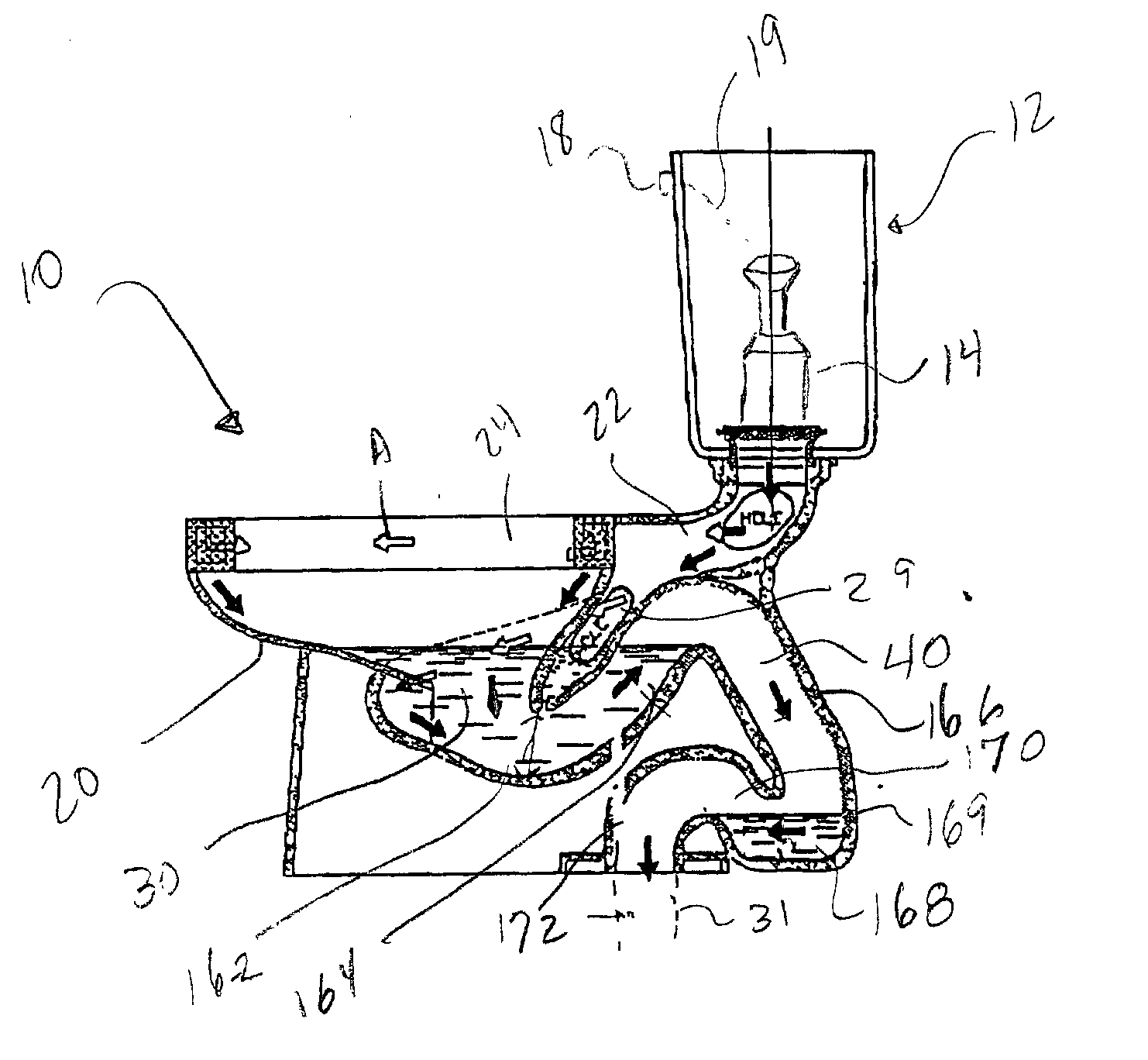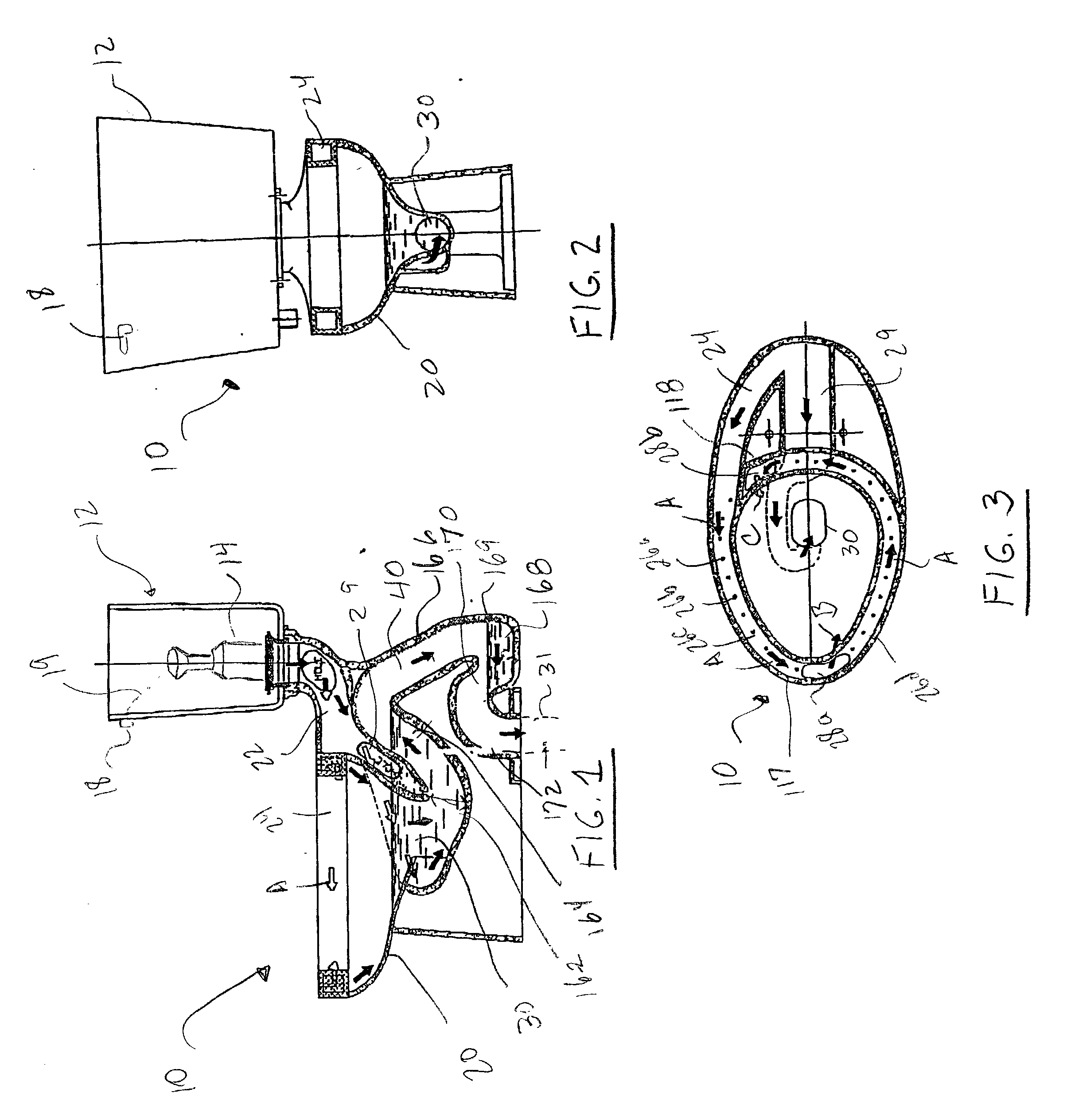Toilet assembly
- Summary
- Abstract
- Description
- Claims
- Application Information
AI Technical Summary
Benefits of technology
Problems solved by technology
Method used
Image
Examples
Embodiment Construction
[0059] Referring now to FIGS. 1-3, a toilet tank in accordance with the teachings of the present 15 invention is illustrated. As will be explained in more detail below, this toilet has a greater energy throughput of the flush water to thereby provide more energy available to remove waste from the toilet bowl. In addition, this toilet permits a toilet to meet governmental agency requirements which mandate a maximum water usage of 1.6 gallons (6 liters) per flush. Further, this toilet improves the flow characteristics of the flow water and flow capacity to provide for not only a more efficient flush but also enhanced cleaning performance and anti-clogging siphoning to assist in waste removal. Moreover, this toilet provides for a quieter and faster flush operation.
[0060] As shown in FIGS. 1-3, the toilet 10 includes a water tank 12 which includes a flush valve assembly 14. The water tank 12, which is positioned over the back of the toilet bowl 20, contains water that is used to initiat...
PUM
 Login to View More
Login to View More Abstract
Description
Claims
Application Information
 Login to View More
Login to View More - R&D
- Intellectual Property
- Life Sciences
- Materials
- Tech Scout
- Unparalleled Data Quality
- Higher Quality Content
- 60% Fewer Hallucinations
Browse by: Latest US Patents, China's latest patents, Technical Efficacy Thesaurus, Application Domain, Technology Topic, Popular Technical Reports.
© 2025 PatSnap. All rights reserved.Legal|Privacy policy|Modern Slavery Act Transparency Statement|Sitemap|About US| Contact US: help@patsnap.com



